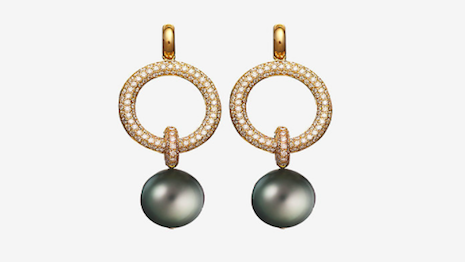- About
- Subscribe Now
- New York,
April 18, 2018

 Luxury brands must eliminate the stigma of being an artisan, as they are essential parts of any brand. Image credit Hermés
Luxury brands must eliminate the stigma of being an artisan, as they are essential parts of any brand. Image credit Hermés
NEW YORK – To preserve the jewelry industry's prosperity, brands will have to remove the stigma of being a laborer and entice more young artisans to make fine jewelry.
In a panel at Initiatives in Art and Culture’s Gold Conference on April 13, speakers from across the jewelry industry talked about the need to recruit more artisans and craftsmen, the people who actually make the jewelry, in addition to designers. Many people seek to enter the jewelry business only to design, but craftsmen are just as, if not more, vital due to the complex knowledge needed to properly manufacture jewelry.
"Four years ago we moved to Brooklyn," said Ted Doudak, CEO of Riva Precision Manufacturing. "There are no walls, we wanted everyone to see everything.
"Where there is a diamond setting place we added a camera and a monitor so that everyone can see how it's done," he said. "Laser welding is the same thing; we put a camera there so everyone can see.
"Not just other workers but also visitors."
Artisan work
Fine jewelry does not produce itself, nor do the big name designers create it by themselves in a single afternoon. Jewelry is created through the long hours of work put in by artisans and craftsmen, those who have worked and studied to master their craft.
This idea was the subject of a recent panel at IAC’s Gold Conference moderated Andrea Hill, owner of Hill Management Group. During the session, panelists discussed the problem of dwindling interest in becoming a craftsperson in the jewelry world.
Event poster for Mastery of an Art: Van Cleef & Arpels. Image credit: Van Cleef & Arpels
Part of this dearth of interest comes from cultural perception. For many in the United States, being designated as a worker or a laborer is not an ideal, but rather it is something to be ashamed of.
"I do think there is a problem that this country has," said Katrin Zimmerman, jewelry designer and founder of Ex Ovo. "In Germany, we have a very strong appreciation of craft.
"As a jeweler you have to do a master's examination that will be displayed proudly in your place of work," she said. "You are not in any way lesser than an engineer or professor or anyone else."
This perception needs to change for luxury jewelry brands to be able to recruit more talent for their workshops. Those craftspeople are the lifeblood of any brand.
Celebrating craft
Many luxury brands have recognized the importance of highlighting just how integral craftspeople are to the creation of luxury goods.
For example, French fashion house Hermès is showing off its artisanal expertise and the heritage of its brand by bringing its annual craftsmanship exhibit to France.
“Hermès Hors les Murs” will debut in Lyon, France, known historically as an important part of the silk industry, which Hermès’ business is connected with. This is one of many initiatives that Hermès has taken to spotlight artisans and craftsmanship (see story).
Similarly, Jeweler Van Cleef & Arpels shed new light on its creations by showcasing them alongside Japanese crafts.
Hermés' recent series focused on its craftsmen. Image credit: Hermés
“Mastery of an Art: Van Cleef & Arpels - High Jewelry and Japanese Crafts” was up last year at The National Museum of Modern Art in Kyoto, Japan, allowing visitors to explore both cultures’ craftsmanship. While luxury brands frequently use exhibits to educate attendees on their craftsmanship, providing this additional context takes the narrative beyond the brand (see story).
Brands must be particular about being open to hiring new artisans and not make them feel excluded or otherwise discouraged from working.
"Some of the students I've talked to have had phenomenal experiences at jewelers and there are others who have not because they’ve been treated badly by existing jewelers at companies," said Patricia Madeja, goldsmith, jeweler and educator. "Some older craftsmen look down at new people because they are young or, frankly, because they are women.
"These are craftsmen who have so much to share and they can be very unwilling."
Share your thoughts. Click here